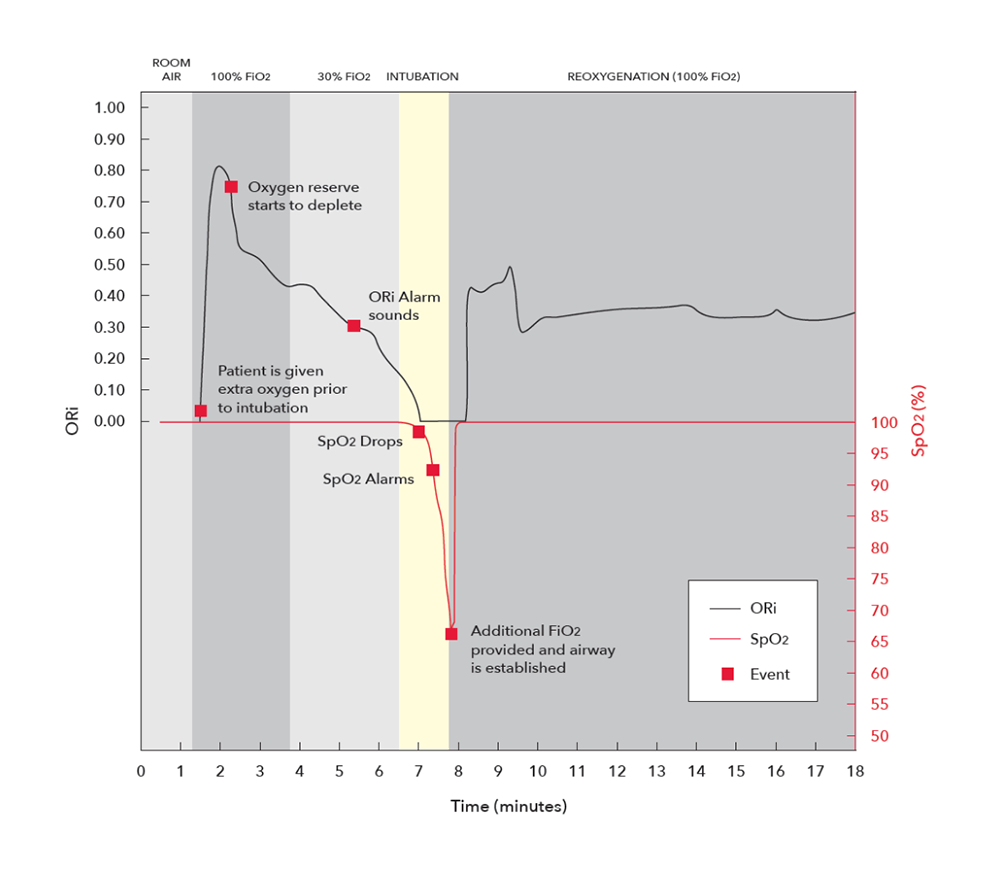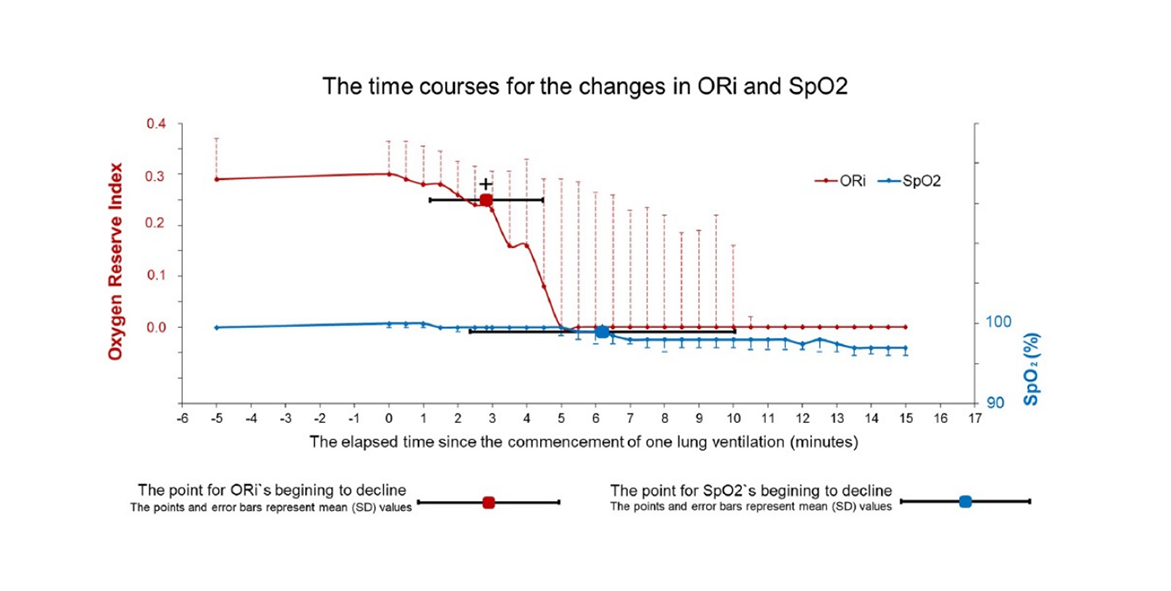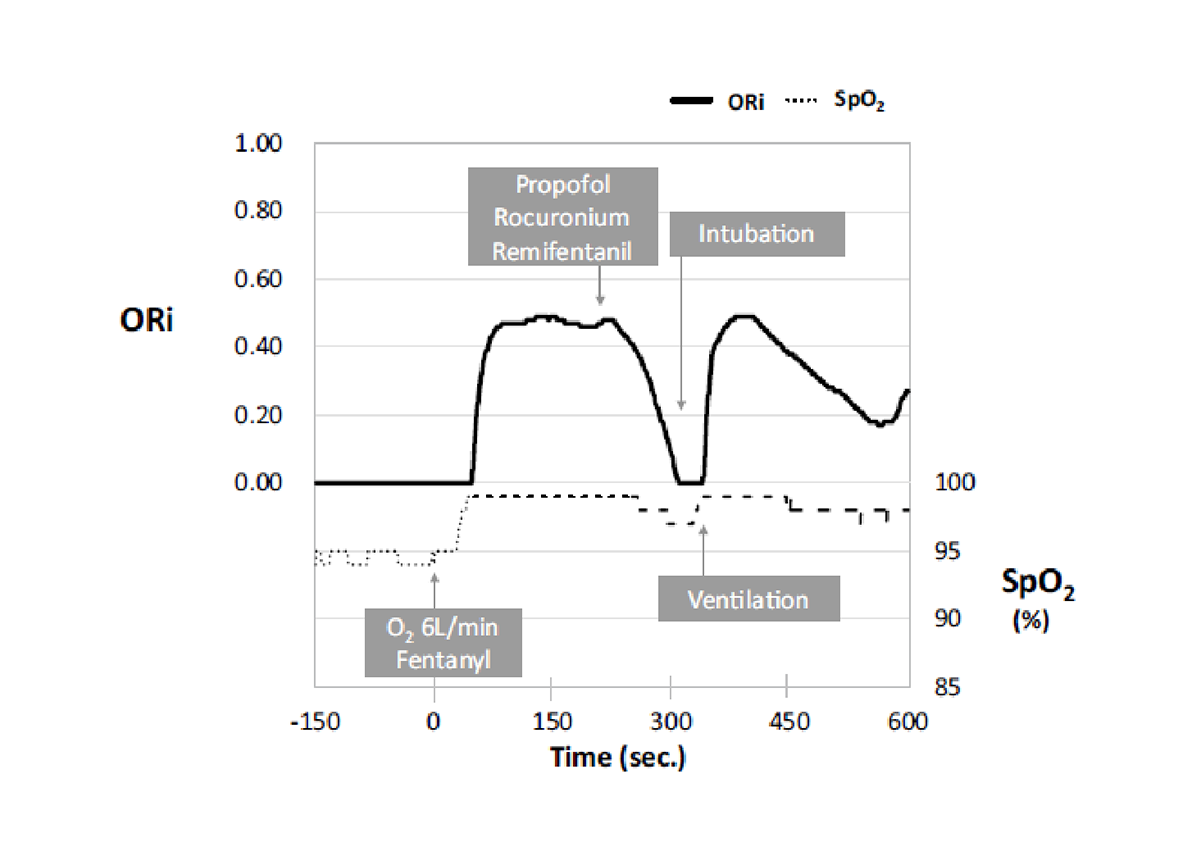Technologies
Oxygen Reserve Index (ORi™)
Expanded Oxygenation Monitoring
The first noninvasive and continuous parameter to provide greater resolution of oxygenation in the moderate hyperoxic range of surgical patients 18 and older receiving supplemental oxygen to help clinicians manage hyperoxia and prevent hypoxia
Limits of Oxygenation Assessment
Oxygen Levels in the Body
- The oxygen status of blood is generally classified into three categories:
- Hypoxia (less than normal oxygenation)
- Normoxia (normal oxygenation)
- Hyperoxia (higher than normal oxygenation)
- Hypoxia represents the failure of a patient’s oxygen supply to meet metabolic needs and can thereby lead to circulatory failure, tissue acidosis, or mortality.1,2
- Conversely, hyperoxia and prolonged exposure to high levels of supplemental oxygen can provide more oxygen than needed, which has been found to lead to oxygen toxicity, causing pulmonary tissue damage or oxygen poisoning.3
Go Beyond Traditional Pulse Oximetry with ORi
While both hypoxia and normoxia can be assessed noninvasively and continuously using SpO2 with traditional pulse oximetry, the assessment of hyperoxia predominantly relies on invasive and intermittent arterial blood gas analysis.
ORi provides an adjunct solution to SpO2 monitoring by offering:
- Increased visibility of oxygenation under hyperoxia in situations where patients are administered supplemental oxygen
- Real-time insights into changes in oxygen saturation to help reduce a patient’s exposure risk to hyperoxia
How Does ORi Work?
Enabled by Multi-wavelength Pulse CO-Oximetry
Part of the rainbow® technology suite of noninvasive measurements, ORi leverages multiple wavelengths of light via a Pulse CO-Oximetry sensor to provide increased resolution of changes in oxygenation through light absorption.
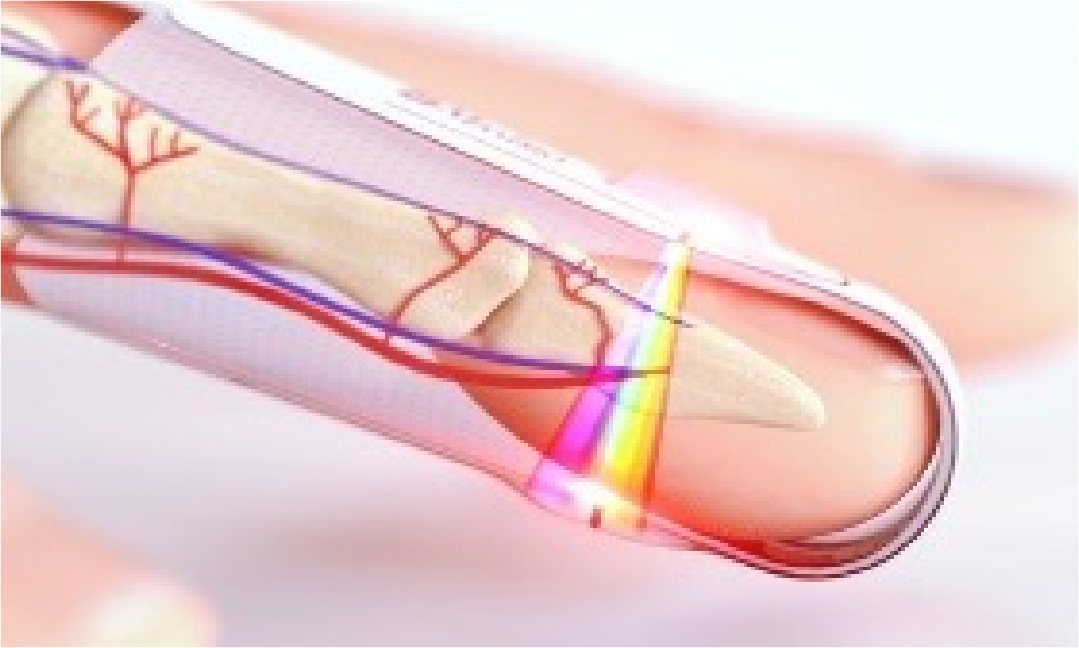
Multi-wavelength rainbow® Technology
ORi is trended continuously in real time alongside SpO2 as a unit-less index between 0.00 and 1.00 to extend the visibility of the oxygenation of patients beyond SpO2 under supplemental oxygen.
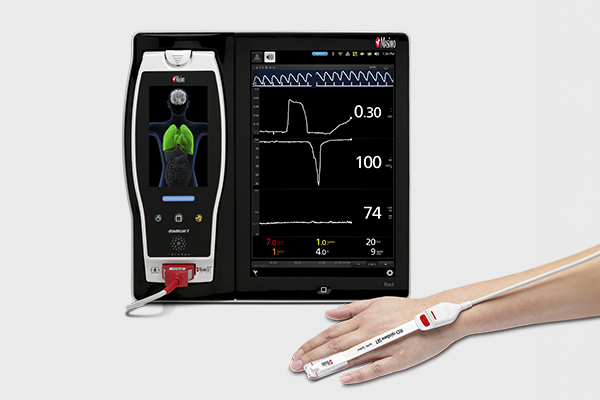
Continuous Trending of ORi and SpO2
ORi is the first-of-its-kind parameter cleared by the U.S. FDA to help clinicians manage oxygen of adults undergoing surgery in perioperative hospital environments.
Greater Visibility with ORi
- ORi addresses the shortcomings of conventional pulse oximetry by providing continuous insight into the oxygenation of hemoglobin in the moderate hyperoxic range (PaO2 > 100 and ≤ 250 mmHg).
- ORi provides clinicians the ability to monitor when the oxygenation of patients on supplemental oxygen has increased into, or decreased out of, the moderate hyperoxic range.
When used alongside SpO2, as on the Root® monitor, ORi offers additional data to help clinicians make timely clinical assessments during oxygen administration that could lead to unintended hyperoxia or during rapid desaturations that could lead to unanticipated hypoxia.
Overcoming the Limitations of Conventional Pulse Oximetry
Masimo revolutionized the pulse oximetry landscape with its breakthrough measure-through-motion and low-perfusion SET® technology for SpO2 (oxygen saturation) and pulse rate monitoring.
See the Masimo SET® Difference
Advancing patient monitoring with innovative technology, Masimo again overcomes a major limitation of pulse oximetry with ORi to provide enhanced visibility of oxygenation in the moderate hyperoxic range noninvasively and continuously.
Powered by rainbow® Sensors
While traditional pulse oximetry uses two wavelengths of light, Masimo rainbow® Pulse CO-Oximetry sensors utilize four or more wavelengths of light to provide ORi alongside additional unique parameters, like noninvasive continuous hemoglobin (SpHb®) and Masimo SET® SpO2.
The power of the rainbow® platform allows clinicians to customize their monitoring needs based on patient acuity and care setting.
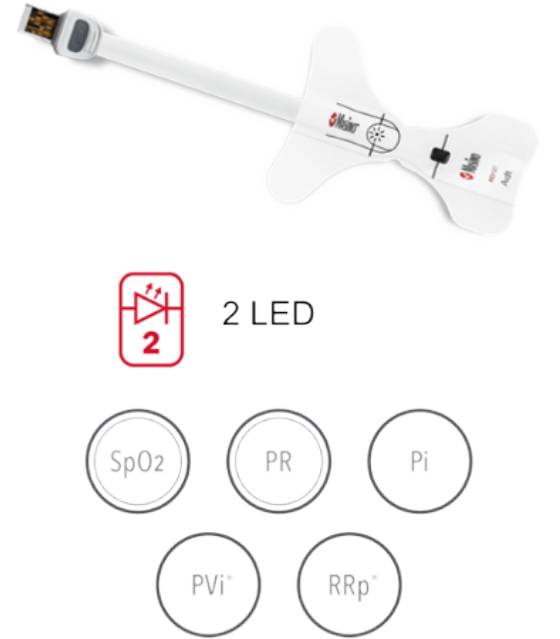
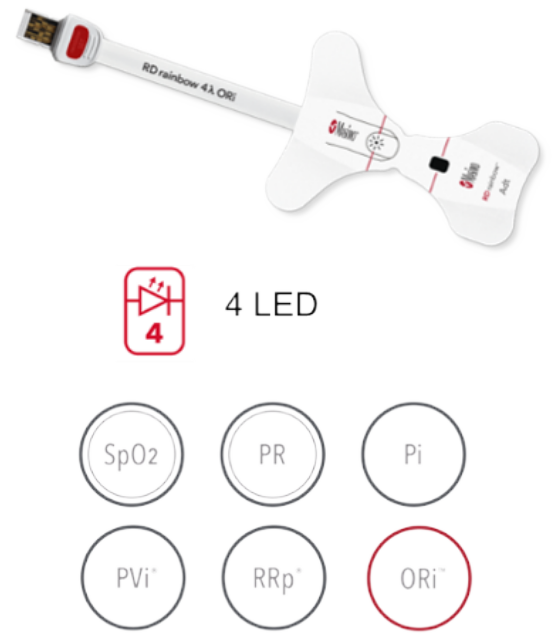
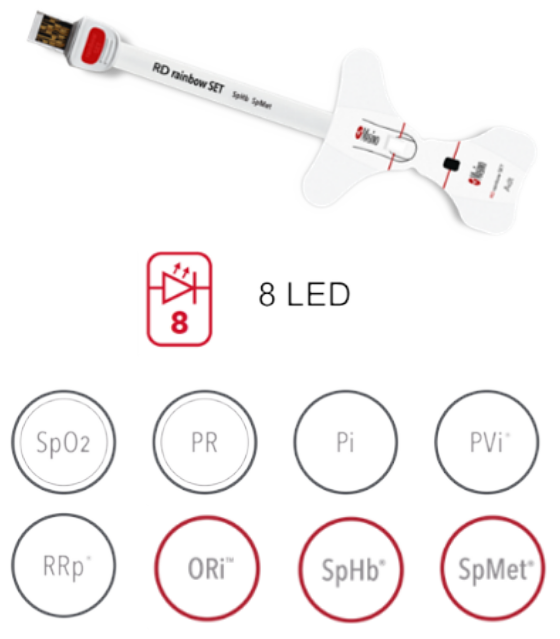
ORi Case Examples and Reviews
Case Examples of ORi
Clinicians have observed ORi alongside SpO2 during a variety of cases to evaluate its clinical utility. Here are some case examples:
-
Case Example
ORi During Orotracheal Intubation
-
Case Example
ORi During One Lung Ventilation (OLV)
-
Case Example
ORi During Rapid Sequence Intubation (RSI)
ORi and SpO2 trends during a representative RSI case of a 71-year-old female. ORi before oxygen administration was 0.00 and SpO2 was 94%. ORi rapidly increased and reached a plateau at 85 seconds after initiation of oxygen administration (6 L/min). Subsequently, ORi began to decline before SpO2 declined, and ORi gradually decreased to 0.00. Regardless of changes in ORi, tracheal intubation was performed when SpO2 reached 98% in this case. ORi quickly increased after initiation of ventilation with 6 L/min of oxygen.9
Read the Reviews on ORi
ORi has been featured in select textbook chapters and review articles as shown:
“Advanced warning of critical oxygen desaturation, especially during airway management, is a goal of a new pulse oximetry function termed 'oxygen reserve index.' This function in its current state of development would alarm when the SpO2 is > 99% and predict the decrease to an SpO2 < 98% in a time frame (e.g., 30–40 seconds) that might impact management.”10
- "The Oxygen Reserve Index.” Modern Monitoring in Anesthesiology
“All anesthesiologists should appreciate advanced warning of impending oxygen desaturation. Every second counts during those crucial moments, and novel technology that has the potential to warn clinicians sooner than the current technology is worth a much closer look.”11
- "When Seconds Count, Buy More Time: The Oxygen Reserve Index and Its Promising Role in Patient Monitoring and Safety." Anesthesiology
“The ORi "may reflect the response to oxygen administration (e.g., pre-oxygenation), and may facilitate oxygen titration and prevent unintended hyperoxia.”12
- "The oxygen reserve index (ORI): a new tool to monitor oxygen therapy." Journal of Clinical Monitoring Computing
Peer-Reviewed Clinical Evidence
Various studies from around the world have evaluated the utility of ORi in the perioperative setting.
-
Preoxygenation Assessment / Advanced Visibility of Desaturation
-
One Lung Ventilation
-
Hyperoxia Assessment
Resources and Contact
Want more information? Below are key resources for ORi.
Materials
Schedule an Evaluation
Integrating ORi into your facility is easy and may require no additional hardware. Contact your Masimo representative or complete the form below to find out more.
References
Salameh A, et al. Front Physiol. 2020 Mar 19;11:224.
Xie J, et al. Mayo Clin Proc. 2020 Jun;95(6):1138-1147.
Mach WJ, et al. Nurs Res Pract. 2011; 2011: 260482.
Estimate: Masimo data on file.
https://health.usnews.com/health-care/best-hospitals/articles/best-hospitals-honor-roll-and-overview
Comparative studies include abstracts presented at scientific meetings and peer-reviewed journals. Clinical studies on pulse oximetry and the benefits of Masimo SET® can be found at http://www.masimo.com/clinical-evidence.
Szmuk P et al. Anesthesiology. 2016; 124:00-00.
Koishi W, et al. Minerva Anestesiol. 2018 Sep;84(9):1063-1069.
Yoshida K et al. J Clin Monit Comput. 2018 Aug;32(4):687-691.
Leibowitz, AB. Modern Monitoring in Anesthesiology and Perioperative Care, Cambridge University Press, Cambridge, 2020, pp. 30–34.
Simpao, AF and Gálvez, JA; Anesthesiology 2016; 124:750–751
Scheeren TWL, Belda FJ, Perel A. J Clin Monit Comput. 2018 Jun;32(3):379-389.
Alp ID, et al. Braz J Anesthesiol. 2023 Jul 28:S0104-0014(23)00079-9.
Tsymbal E, et al. J Clin Monit Comput. 2021 Aug;35(4):749-756.
Hille H, et al. Ann Intensive Care. 2021 Jul 17;11(1):112.
Fleming NW et al. Anesth Analg. 2021 Mar 1;132(3):770-776.
Yoshida K, et al. J Clin Monit Comput. 2018 Aug;32(4):687-691.
Bang YJ, et al. J Anesth. 2023 Oct 3. Epub ahead of print. PMID: 37787833.
Saraçoğlu A, et al. Turk J Med Sci. 2021 Oct 21;51(5):2413-2419
Alday E, et al. J Cardiothorac Vasc Anesth. 2020 Feb;34(2):417-422.
Ahn JH, et al. Medicine (Baltimore). 2022 Nov 18;101(46):e31592.
Yoshida K, et al. J Clin Monit Comput. 2020 Jun;34(3):509-514.
Lasocki, S., et al. Intensive Care Med. 2019 Nov;45(11):1661-1662.
The ORi feature is intended to be used in patients undergoing surgery as an adjunct to SpO2 for increased monitoring resolution of elevated hemoglobin oxygen saturation levels (e.g., due to administration of supplemental oxygen). The ORi feature is indicated for the monitoring of hemoglobin oxygen saturation levels in patients 18 years and older (adults and transitional adolescents), on supplemental oxygen during no-motion conditions perioperatively in hospital environments.
Caution: Federal (USA) law restricts this device to sale by or on the order of a physician. See instructions for use for full prescribing information, including indications, contraindications, warnings, and precautions.
PLCO-005617/PLM-14872A-1023
